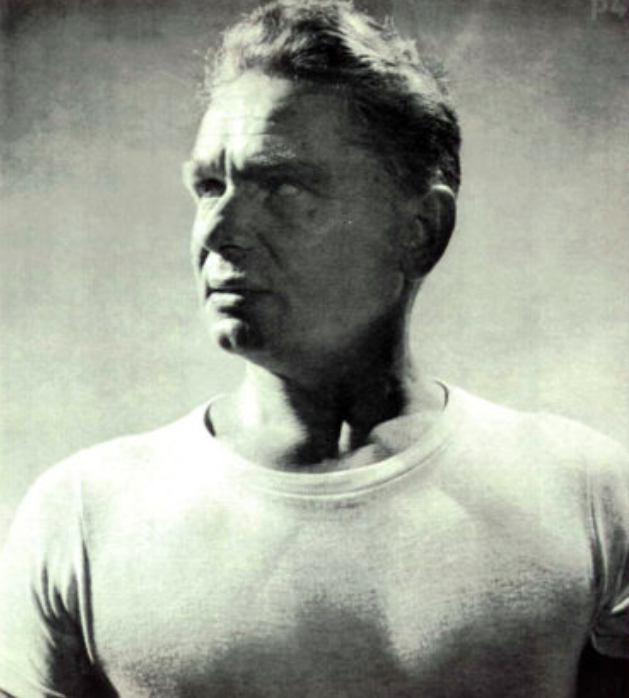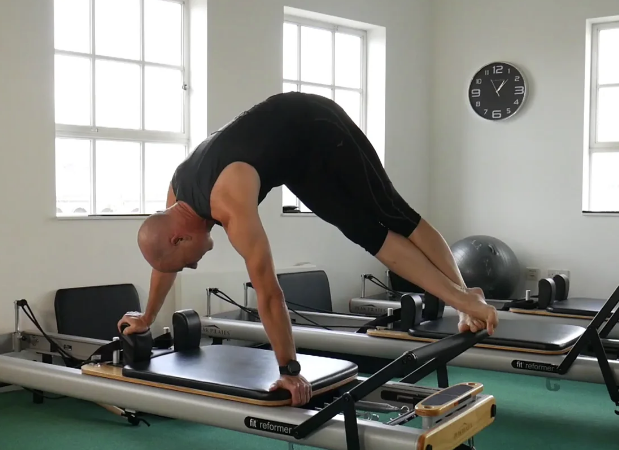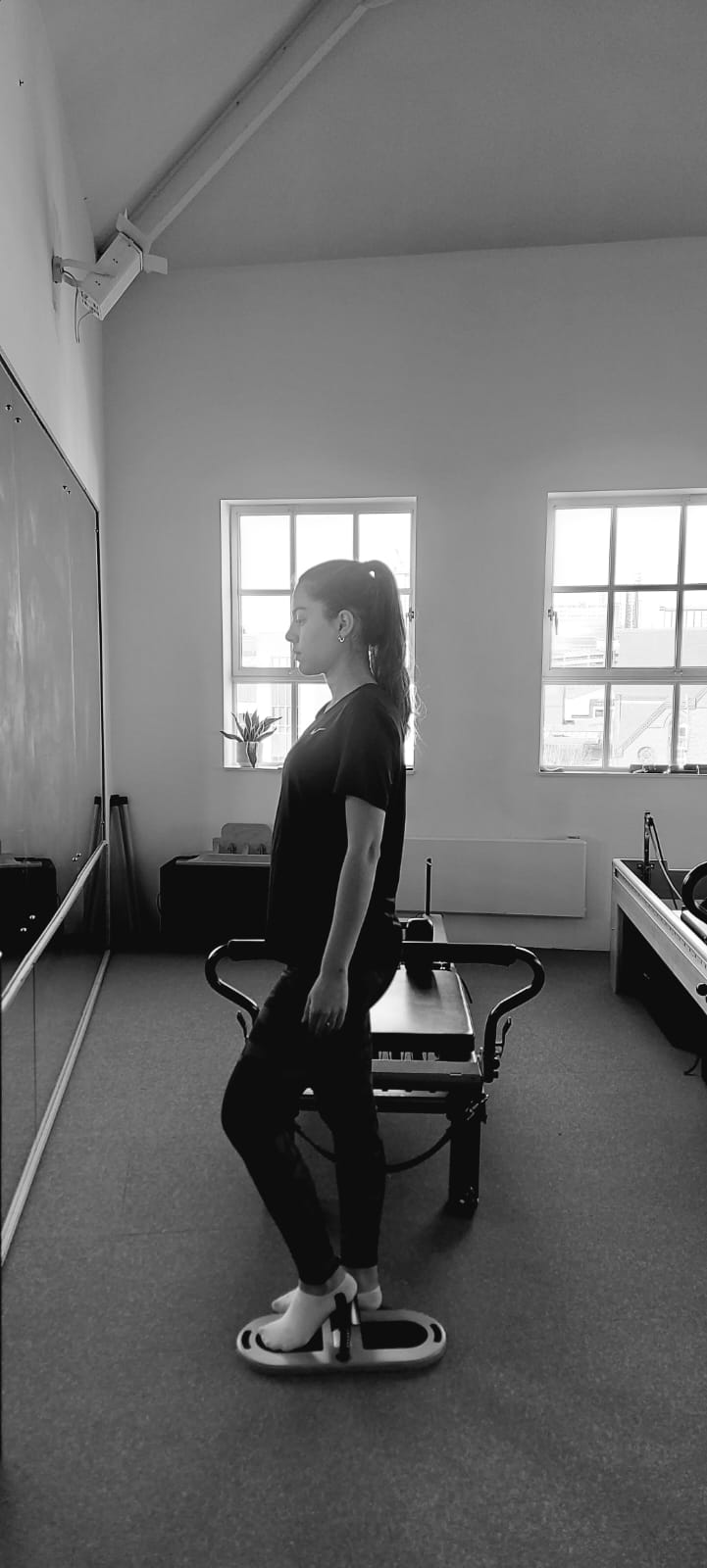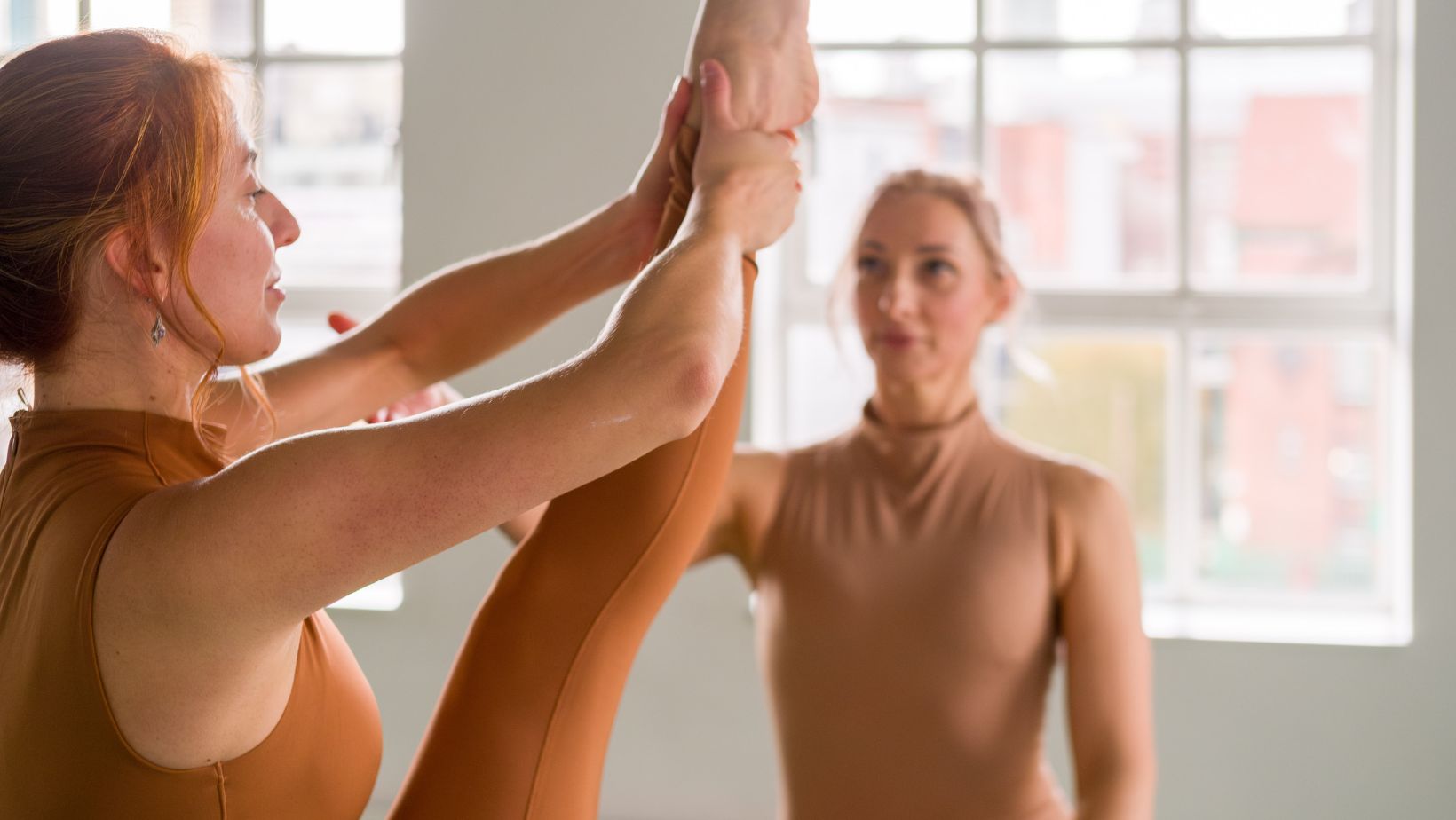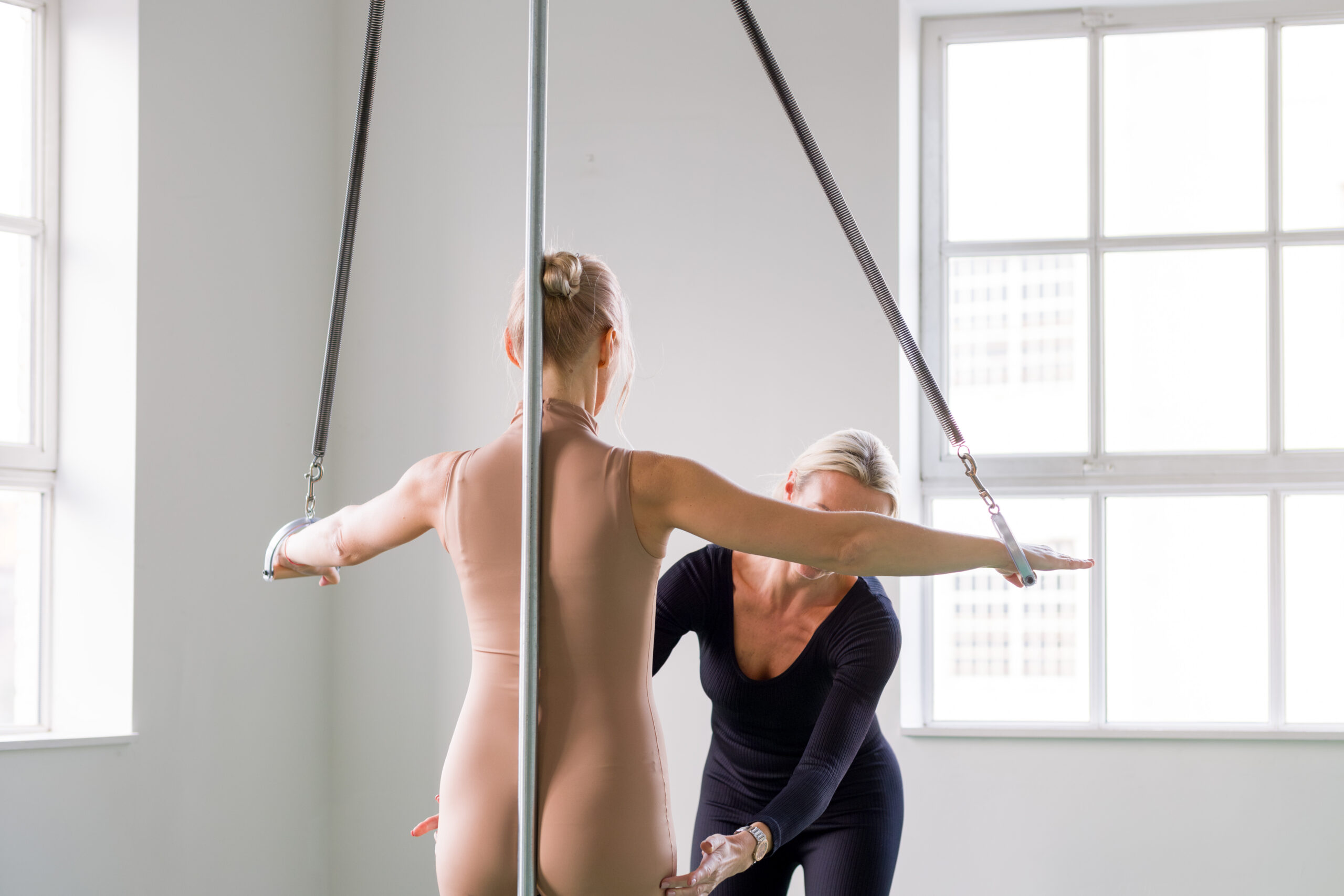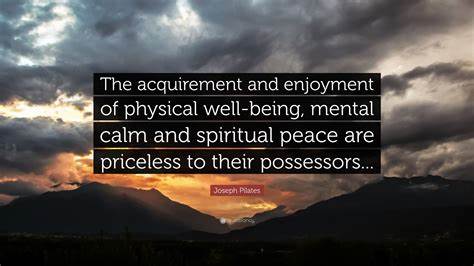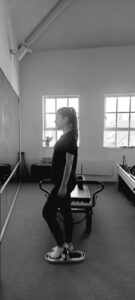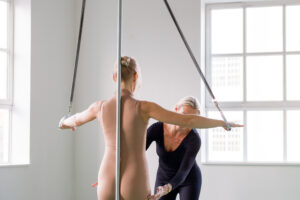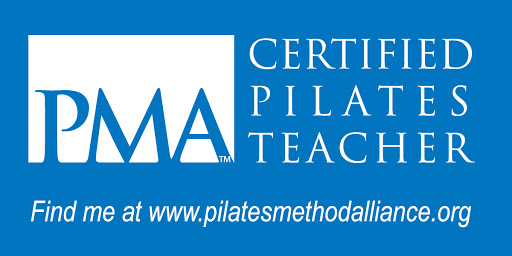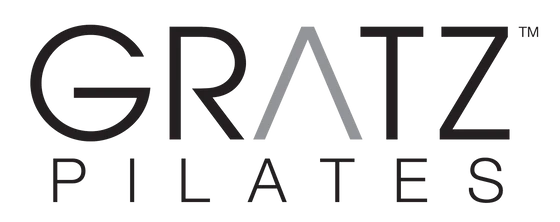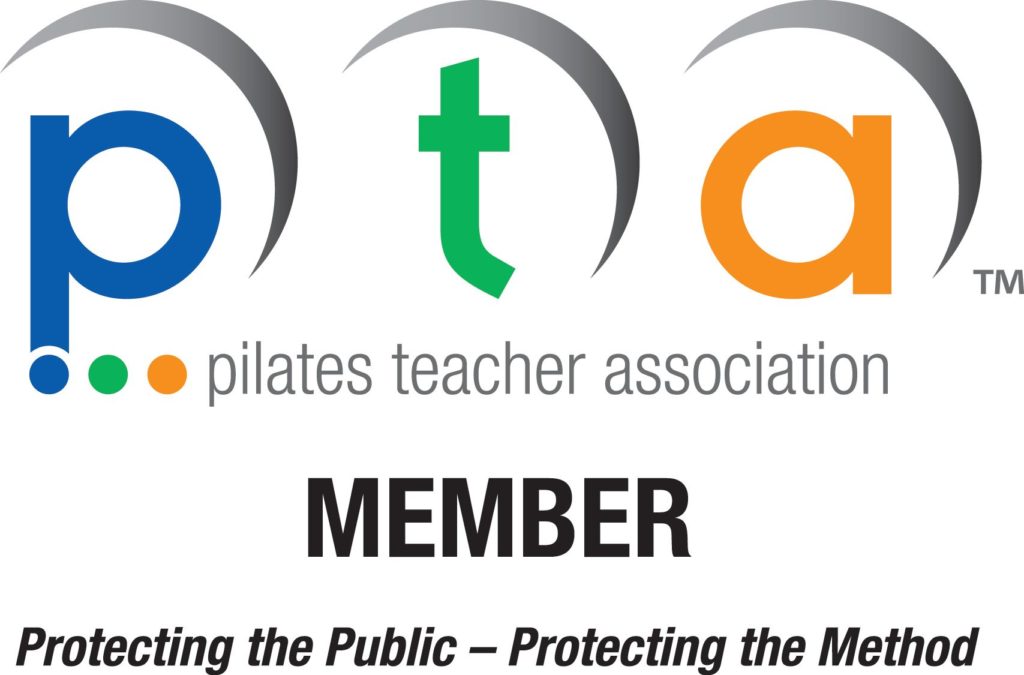“Improvement” in Pilates is different to the Fitness World…
In Pilates, we NEVER work until muscles failure or near failure. That doesn’t mean Pilates isn’t exercise, it is. It’s hard exercise. It should stress, but never distress.
People often ask what’s the difference between the Levels in Pilates: Beginners, Intermediate and Advanced. In the fitness world, progresses is measured by load and number of repetitions. Pilates isn’t like that. The use of springs can lead us to think that increased spring load makes an exercise more challenging. In fact, in may instances, lowering the springs loading makes the challenge greater. It’s more useful to think of the springs as supplementary muscles rather than load to be resisted.
There’s more: in the Pilates world, we are more concerned with the layers and depth of movement – but it goes much further than that. But first let’s turn the clock back and see how Pilates was originally taught.
There were no levels – as simple as that. Teachers just taught the body in front of them. But over time, Pilates has become “modularised” – which has played a part in diluting the original method. BUT modularizing in the sense of creating levels is useful because it helps us to state what we are aiming for as we progress.
“A person can be new to Pilates and execute advanced exercises. It is the HOW and DEPTH of the work which dictates the Student’s level – not the exercise.”
— Kathy Ross Nash “The Red Thread of Pilates”
It’s the “depth” and the “Layers” that you bring to the exercise
– not an inherent quality of a particular exercise.
The single most important reason is this: it is the HOW you do the exercise that dictates your level, not the exercise itself. It is the depth and the LAYERS that you bring to an exercise that matters.
If it’s not the necessarily inherent qualities of the exercises, then it’s perfectly possible to practice only “beginner” exercises and still be an “advanced” practitioner of Pilates. Of course, some exercises are objectively more challenging: Handstands, Headstands and The Cadillac Canopy Series/ are approaching acrobatics…
I think that it is helpful to think of exercises that defeat you as “currently inaccessible”.
That’s why it perfectly possible for someone that is completely new to Pilates be able to execute advanced exercises. But equally, it is important to consider that Foundational exercises are still present in the advanced workout. That tells us that in those Foundational exercises are performed differently by an experienced practitioner compared to someone new to Pilates…
A word about “beginner”, “Intermediate” and “Advanced”
“Foundational” is a much better word to use than “beginner” because one of the primary objectives here is to literally Lay the Foundations for future progress.
Similarly, “Intermediate” is often called “Core” because that is the Core of The Work – from where all the “Advanced” and “Super Advanced” work comes from. You don’t get good at the Advanced & Super Advanced repertoire by constantly practising Advanced exercises, but by digging deeper and deeper in tot Foundations and Core work.
So what are the characteristics of each level?
Pilate is about learning and there are different things to learn at different levels.
BUT…
If “Pilates really challenges your strengths and strengthens your weaknesses”, then the characteristics listed below need to be present in both your strengths an weaknesses.
Foundational (beginner) Pilates: laying the foundations
At this level, the exercises and the apparatus SUPPORT you. The Mat, less so.
Most people want to move really slowly at this level. But, if you don’t move, we can’t correct you, so you might be encouraged to move faster than you think.
- The Pilates Principles: centering and concentration are key at this level:
- centering is learning to move from the powerhouse / centre / core. Before you begin to move, focus your attention on your core muscles, check your alignment and think about from where you will initiate the movement.
- concentration allows you to focus on body position, posture and alignment and on each movement as you perform it. Set aside a quiet space to practice. Bring you mind to the Mat or Reformer.
- The focus is on maintaining the stability of good alignment in round back and flat back shapes. Side bending and rotation are present in small amounts. Spinal extension comes later, after “flat back” is mastered.
- At this level, the Mat is more challenging than the Reformer because there is less support and feedback from footbar, carriage, headrest and springs.
- Learning and memorizing the exercises – there tend to be a few more repetitions than in other levels. Once learned (most people take about 6-8 hours), the workout can be done in a short space of time (less than 25 minutes) – and that marks the move to Intermediate.
Core (intermediate) Pilates: the core of the work
The exercises and apparatus begin to CHALLENGE you – though the the focus of the Foundation Level remains
- The Pilates Principles: control and precision are key at this level:
- control emphasises making the movements while deliberately controlling the muscles. Do not allow the springs or gravity to do the work for you. When you arein full control of the exercise, your body will gain greater benefit from each exercise and reduce chance of injury in daily life.
- precision means performing the exercises correctly and in control. In Pilates, “less is more” – it is better to do fewer repetitions of an exercise correctly and in control than not. Anytime you feel pain or discomfort – stop. Pilates should stress, not distress.
- learning new exercises – repetitions tend to become fewer here than in Foundational.
- the dynamic of the Two Way Stretch moving from the strong centre (which was introduced in Foundational Level)
- more transitions are introduced
- the focus is on articulation against a stable base creating space between the joints of the body
- you’ll begin to use better use the concept of creating length
- movement patterns are more complex as simple planes of motion become combined
- smaller points of support is used challenging stability
- Control and precision are key principles at this level
Advanced Pilates & Super Advanced
The apparatus and exercises DEFEAT and DEFY you! We very rarely teach these exercises OR way of moving through the workout…
- The Pilates Principles: breath and flow are key at this level:
- The breath becomes more important at this level. At previous levels, there has been too many other things to concentrate on! As a general rule, remember to breathe through your nose when you are preparing to move and exhale fully whilst moving.
- Flow is when you are comfortable with the exercises and their order. You’ll be able to move from one exercise to the next efficiently and minimal extra movements. The exercises become one flowing movement with no gaps, spaces or stops as the workout unfolds challenging stamina.
- Imagery dynamics and rhythm become major elements to understand, master and integrate into the workout
- Transitions develop so that each exercise is totally connected. The workout becomes one fluid motion that constantly changing shape and increasing in difficulty and dynamics from beginning to end.
- Repetitions disappear and everything becomes on flowing movement instead of one exercise with many repetitions.
- Advanced level uses the Stability learned in Foundational Level and the Space or Openess created in the Intermediate level and challenges it all to move with control.
- The more stability is created, the more space and articulation potential there can be
- The more space the mind can create in the body, the more control is needed to move safely.
- The more control, the more potential for dynamic movement.
- The workout becomes very dynamic.
- Moving with breath and Fluidity are the primary principles here
A final word from Joseph Pilates himself
“Pilates is for doers and thinkers…”
Looking at how the different levels are described, this phrase seems perfect. If you’re not thinking as you do, you never gain the insights you need to progress.
